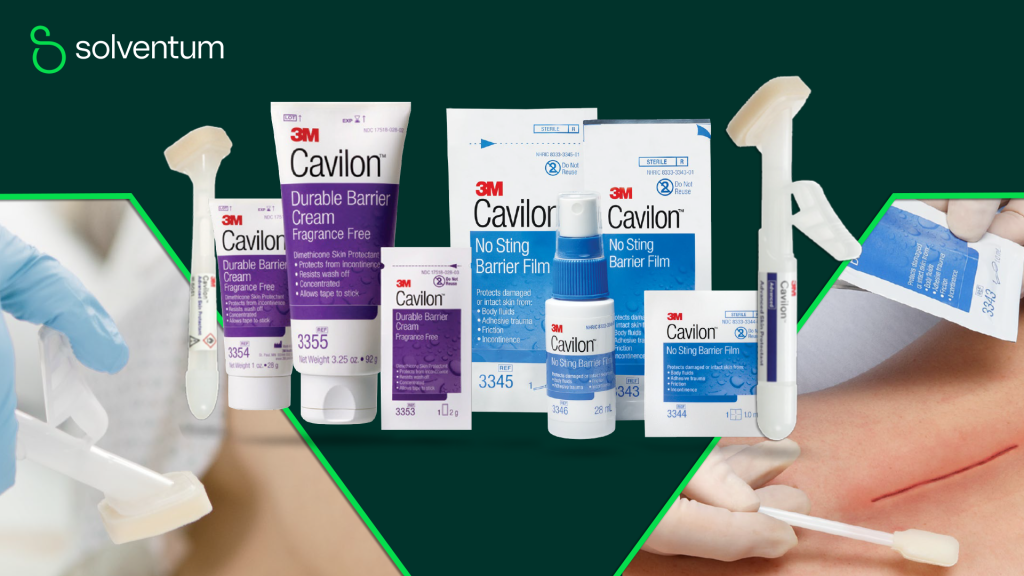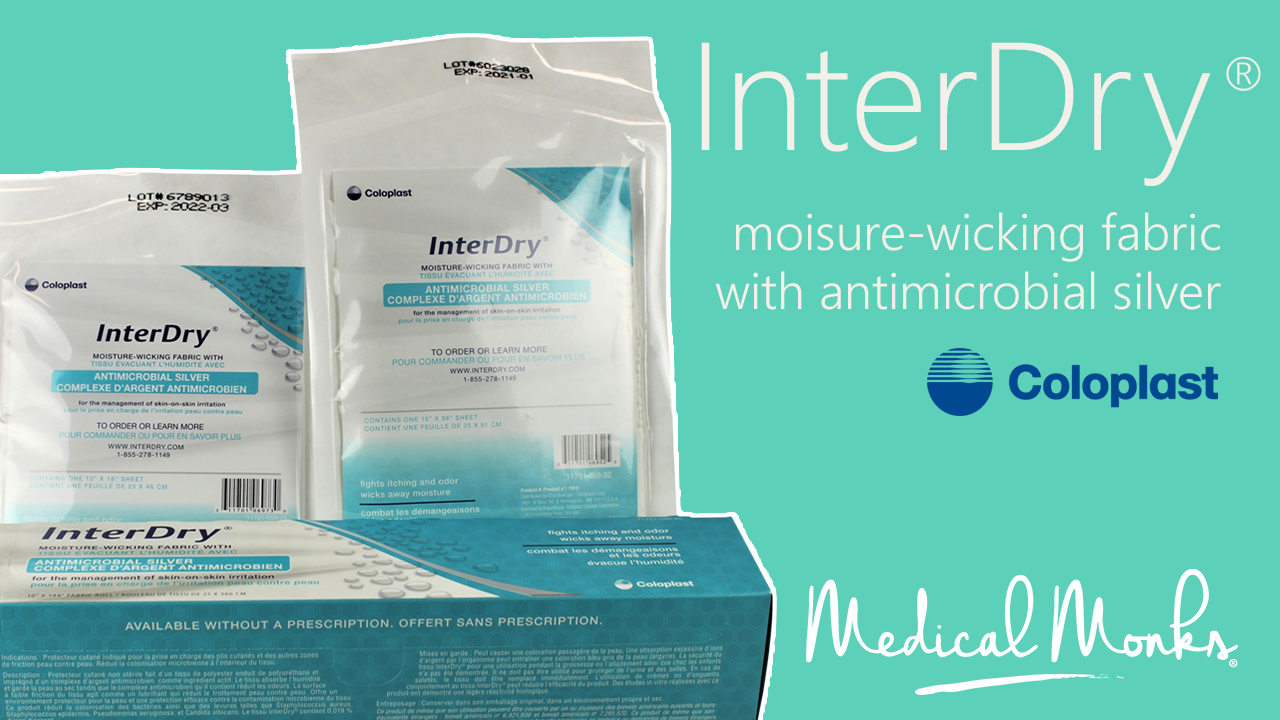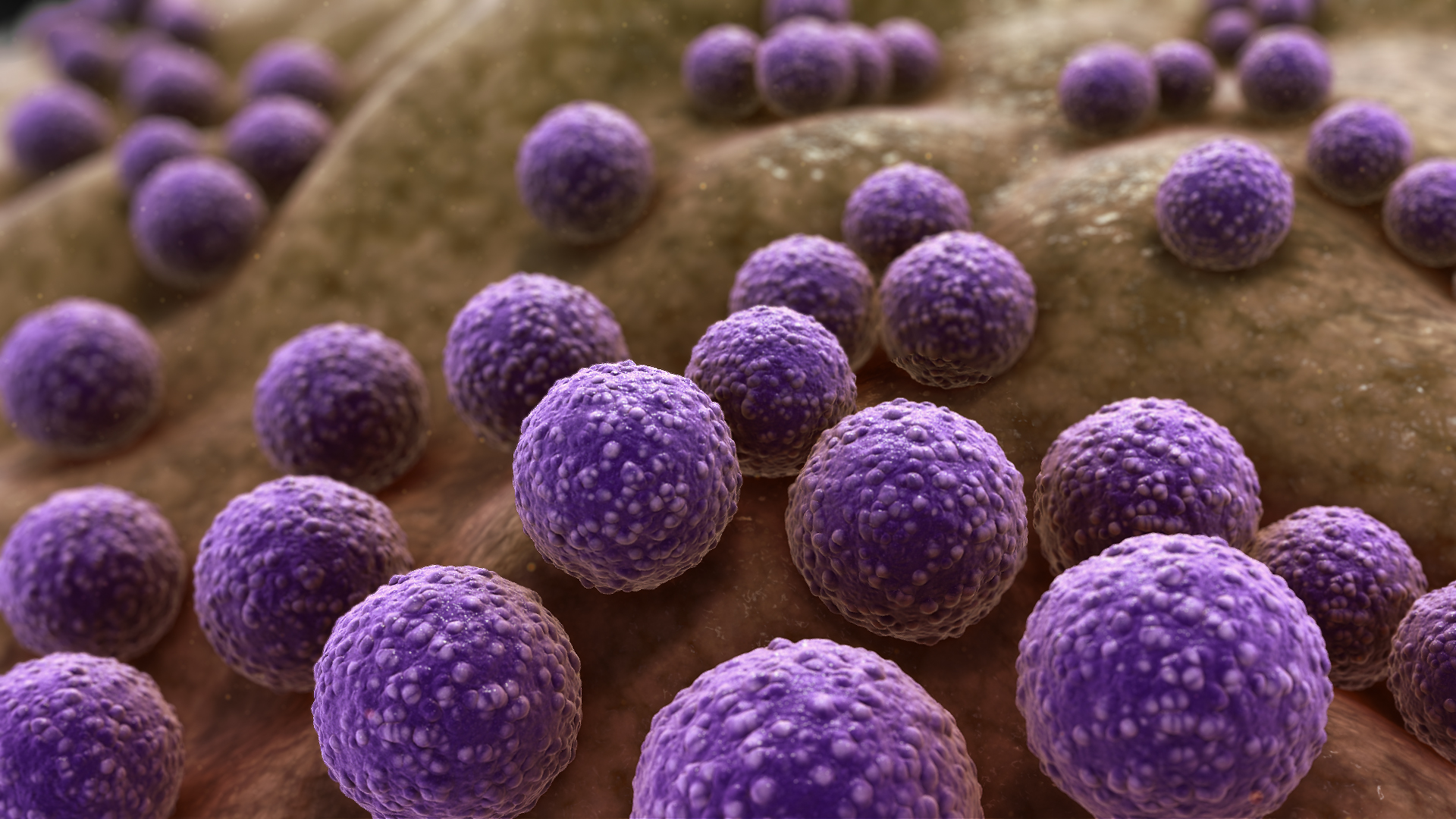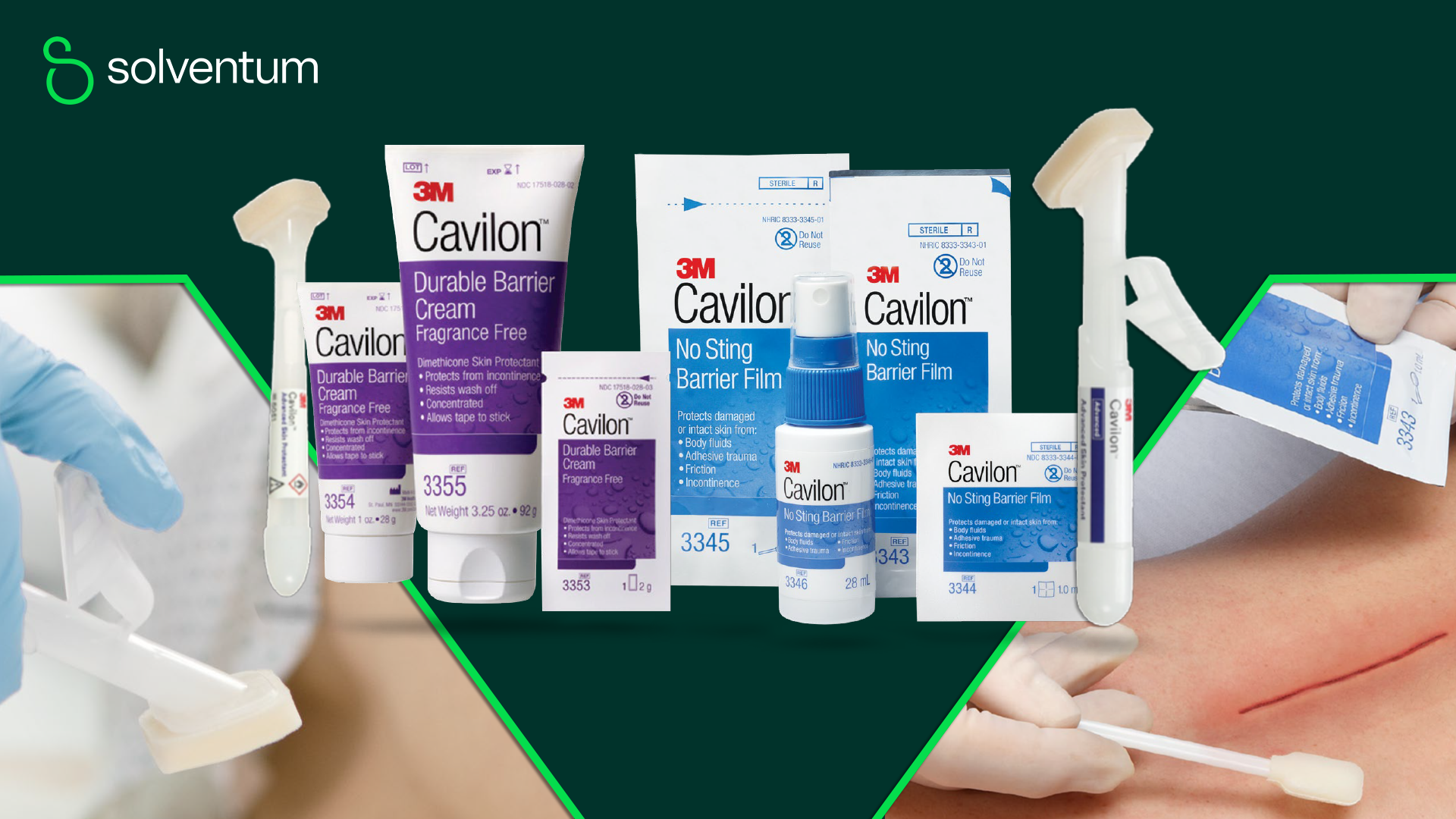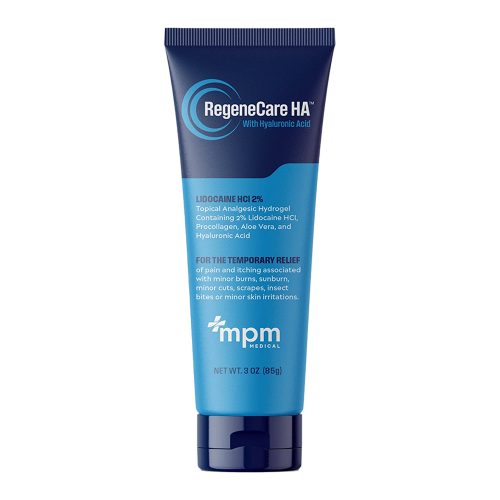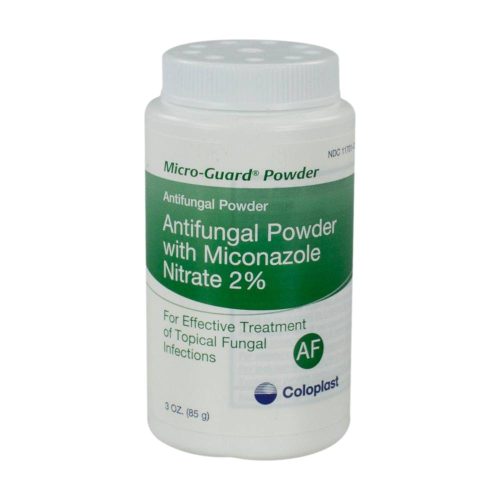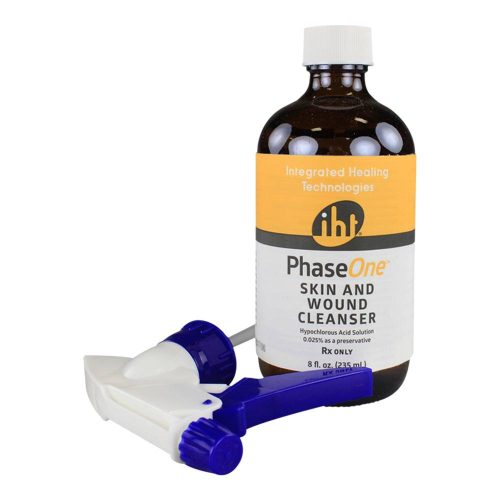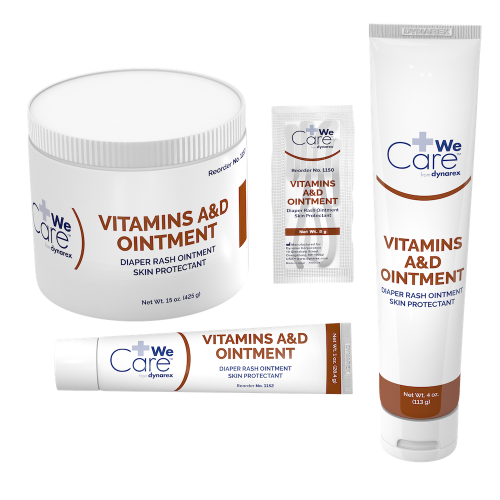For many patients, failing to meet your skin care may result in one of three painful complications:
- Moisture-Associated Skin Damage (MASD)
- Medical Adhesive-Related Skin Injury (MARSI)
- Pressure injuries/ulcers (PI/PU)
These issues are all too prevalent. Today, 41% of nursing home residents deal with Incontinence-Associated Dermatitis (IAD), a type of MASD caused by excreta, while 77% of individuals with surgical ostomies develop skin complications.
Clinicians can mitigate the risk of these complications by using advanced skin protectant solutions.
Healthcare providers can stay informed of evolving best practices and new, clinically effective skin care and protection solutions. Then, select and tailor the best solution to meet different patients’ unique risks and conditions.
Understanding MASD/PI/MARSI
MASD is both destructive and all too common. When skin is over-hydrated and, often, exposed to irritants, the skin’s pH shifts, creating vulnerable permeability in the skin’s outermost layer.
This shift, in turn, causes the skin to break down, leading to complications like infections, pressure ulcers, maceration, nerve pain, and slowed wound healing. In the worst cases, skin damage severely reduces quality of life and can even be fatal.
Likewise, MARSI injuries due to medical adhesives are painful and can delay healing. In the average acute care setting, 21.4% of patients experience MARSI. Both moisture and friction increase the likelihood of developing a pressure ulcer.
3M™ Cavilon™ Skin Care Solutions Prevent Skin Injury
Selecting the right solution can prevent these issues. Cavilon™ No Sting Barrier Film, 3M™ Cavilon™ Durable Barrier Cream, and 3M™ Cavilon™ Advanced Skin Protectant can be part of those solutions.
Make Informed Decisions As Skin Barrier Films and Protectants Evolve
Update and maintain best practices with Cavilon Skin Care Solutions for wound care and prevention solutions.
As medical technology advances, standards and best practices evolve. What does that mean when it comes to protecting your patients’ skin?
What Is A Skin Protectant?
A medical skin protectant is a topical film, barrier, or moisturizing substance layered atop the skin to prevent or limit damage. It’s typically used when skin is at increased risk of injury.
While over-the-counter skin protectants exist, clinical skin protectants are often uniquely formulated to maintain precise skin hydration levels and prevent infection in medically complex circumstances. Skin protectants’ formulas and application processes vary, and different protectants are appropriate in different situations.
What Types Of Advanced Skin Protection Solutions Are Most Useful?
Advanced skin protection solutions can be categorized by the types of protection they offer. These include:
- Polymeric membrane dressings (PMDs)
- Includes semipermeable polyurethane film in a hydrophilic matrix
- Alginates
- Foams (adhesiveness is optional)
- Low adherence dressings (wet/dry gauze)
- Antimicrobial gels
- Zinc sprays
- Applied barriers
- Barrier creams
- Barrier wipes
- Barrier powders
- Barrier ointments
- Hydrogels (partially hydrated soluble polymers)
- Hydrocolloids (adhesive viscous gels, pastes, or sheets)
- Typically bonded to foam or semipermeable film
- Other barrier film formulations
Different skin protectants are appropriate depending on the patient’s wound care needs or skin vulnerability.
What Solution Type Best Protects Skin From Over-Hydration?
Over-hydrated or damp skin requires a seal that can adhere to moisture molecules. For routine, typical protection, consider a liquid polymer formulation, like the terpolymer solution in Cavilon No Sting Barrier Film.
Terpolymer solution films are available as wipes, sprays, and foam wands. While the application apparatuses vary, the substance is the same.
What Type of Skin Protectant Works Best For Dryness?
The best protectant for skin at risk of dehydration or dryness incorporates moisturizing elements. Cavilon Durable Barrier Cream uses polymers to “lock in” moisture under the protective barrier.
Which Skin Protectant Options Are Most Effective Against Wound Exudate And Irritants?
Polymeric-cyanoacrylate solutions, like Cavilon Advanced Skin Protectant, use cyanoacrylate’s unique ability to adhere to skin at a molecular level, due to its high moisture affinity. When touching even one molecule of moisture, the combination substance enacts a chain reaction, creating a strong polymer barrier.
This robust seal maintains skin integrity and promotes healing, even while protecting covered skin from harsh fluids like acidic wound exudate. Once it adheres to skin, however wet, it lasts for up to seven days.
Moreover, because cyanoacrylate solutions do not incorporate solvents, these protectants are useful for patients at risk of MARSI, or who’ve previously experienced solvent-related stinging.
Which Solutions Reliably Prevent Adhesive-Related Injury?
Cavilon No Sting Barrier Film can protect skin from adhesive. Once it dries, medical tape can adhere to the film directly, securing devices or gauze without posing additional risks.
Distinct Purposes of Different Skin Barrier Film and Protectant Options
Different skin protectants are designed to handle different types of threats to skin integrity.
Barrier Creams and Liquid Skin Protectant For Ostomy Care
Ostomy care typically requires applying protective coatings to the skin around the stoma and under the ostomy appliance. Barrier creams, powders, and sprays are all useful options.
Cavilon Durable Barrier Cream is often used, as its polymer formula resists wash-off without interfering with stoma pouch adherence.
Cyanoacrylate Skin Protectant Barriers Prevent Injury From Friction, Skin Fissures, and IAD
Skin on bony prominences, like heels and toe tips, faces a higher risk of breakdown due to pressure ulcers. Cyanoacrylate barriers are effective in these locations, as they’re initially applied as a liquid, then seal matching the contours of the body part.
Cyanoacrylate barriers often protect skin at risk of breakdown, particularly due to MARSI.
Skin Barrier Film, Semipermeable (Cavilon No Sting Barrier Film)
Semipermeable skin barrier film is best used to cover catheter sites, skin graft sutures, and similar wounds with minimal drainage.
The fragility of these wound sites makes them particularly vulnerable to MARSI, so skin-safe adhesion is crucial.
What Benefits Do Advanced Skin Protection Solutions Offer?
Innovative skin protection solutions use diverse means to prevent skin injury, increase skin integrity, and improve patient comfort.
Skin Protection Solutions Improve Patient Comfort & Skin Integrity During Wound Care
Using a liquid film‐forming acrylate (like Cavilon No Sting Barrier Film) to protect peri-wound skin around patients’ chronic ulcers significantly increases patient comfort and pain control, potentially reducing nursing time.
Prevent Facial Skin Pressure Injuries
In 2020, medical staff treating COVID-19 patients combined Cavilon No Sting Barrier Film with hydrocolloid dressing on their facial skin, effectively reducing the frequency and severity of facial pressure injury from long-term sealed mask use.
What Type Of Protectants Are Cavilon Skin Care Solutions?
Cavilon Skin Care Solutions are polymer and silicone film barriers and creams. They’re not gels, foams, or alginates, though they can be paired with these products for wound care.
How Have New Skin Protection Solutions Advanced Care?
Skin protectant chemistry and technology have advanced to improve patient outcomes on multiple fronts. Significant progress is driven by material innovations, like polymer engineering.
Consider how Cavilon Skin Care Solutions protect skin in complex conditions better than ever before.
1. Terpolymer Formula Improves Durability
Cavilon No Sting Barrier Film uses a terpolymer formula to create a strong film without the use of stinging (alcohol-based) solvents.
In a competitive study of liquid barrier films, the terpolymer:
- Created a barrier with greater integrity and durability than all other tested formulas
- Demonstrated the highest level of optimal breathability
- Significantly reduced peel force
Moreover, using acrylic terpolymer barrier film beneath transparent catheter dressings has been shown to reduce the frequency and severity of both “dressing disruptions and skin integrity issues.” These benefits likely stem from its longevity and low-irritant composition.
2. Polymer Cyanoacrylate Technology Better Reduces Injury and Infection
Cyanoacrylates are fast-acting molecular adhesives. Advances in medical technology have led to polymer cyanoacrylate barriers: liquid applications that solidify into thin, transparent, flexible protective barriers.
Cavilon Advanced Skin Protectant uses this unique, quick-drying formula to help providers reduce skin injury and ulcer risks when managing delicate, complex conditions:
- Polymer cyanoacrylate barriers quicken the healing of skin tears, IAD, and similar ostomy-related dermatitis in infants.
- They effectively reduced friction and incidences of skin maceration.
- Polymer cyanoacrylate protectants also effectively prevent bacterial and candida infections.
- The barrier is not penetrable by (nor supportive of) those microbes.
The evolution of cyanoacrylate technology cuts costs while increasing protective effectiveness. The cost of treating stage II pressure ulcers with cyanoacrylate barriers is between 9% and 77% lower than the cost of treatment with standard foam dressings.
3. Terpolymer barriers prevent friction ulcers, speed pressure injury healing
In a study of Cavilon No Sting Barrier Film, the terpolymer-based liquid barrier film reduced the coefficient of friction (CoF) between skin and fabric more dramatically than the reduction found using silicone-based barriers.
This significant friction reduction is correlated with more reliable and effective prevention of pressure ulcers.
In a separate study, integrating Cavilon No Sting Barrier film into standard treatment protocol for stage 1 and 2 pressure injuries significantly increased the healing rate of those injuries over the previous standard.
4. Acrylate Terpolymer Dimethicone Barrier Cream Reduces Inflammation While Moisturizing
Skin barrier solution research has developed advanced, effective moisturizing barrier cream by combining two hydrating agents and a unique binding / dispersing molecule:
- Dimethicone, a silicone that prevents water loss
- Glycerin, a polyol compound that draws water in
- Acrylate Terpolymer, a tailored, plasticized polymer that can bind and disperse
Acrylate Terpolymer dimethicone-glycerin products, like Cavilon Durable Barrier Cream, create a waterproof barrier over dry, chapped, or inflamed skin, hydrating the skin while protecting it.
The combination effectively protects skin both vulnerable to exudate and at risk of dryness, such as skin affected by incontinence, or skin under pressure due to the patient’s physical sedation.
Studies of these barrier creams show:
- Cavilon Durable Barrier Cream reduces friction and minimizes shear between skin and incontinence pads better than alternative barriers
- Dimethicone-glycerin barrier cream, with other Cavilon Skin Care Solution products, reduced the rate of skin breakdown among nursing home residents by 42%
- Acrylate Terpolymer dimethicone-glycerin cream barriers retain moisture better, and resist washout longer, than non-polymerized options.
5. CHG-Compatible Solutions Improve Cleanliness Without Compromising Barrier Strength
Chlorhexidine Gluconate (CHG) is a highly effective, low-cost antiseptic, often used to disinfect skin before surgery. Patients under long-term care are at greater risk of Hospital-Acquired infections (HAIs). Regular bathing in CHG is standard, well-evidenced practice to prevent HAI in these circumstances.
However, many skincare products are incompatible with CHG; applying them inactivates CHG’s antiseptic properties.
Fortunately, advancement in clinical skin protectants has led to CHG-compatible barrier films, including Cavilon No Sting Barrier Film.
6. Fast, Easy Barrier Application
The engineers of Solventum further advanced protective skin care with the Cavilon Advanced Skin Protectant applicator.
The device enables easy, precise coating of the liquid barrier. It’s soft to the touch and mess-free.
How To Choose The Right Skin Protectant Solution For The Job
Choosing the right skin protectant solution requires careful assessment of the patient, their condition, and their environment.
The National Institute of Health recommends analyzing relevant wound features, including:
- Mechanism of injury
- Risk of contamination
- Potential injury to deeper structures
- Underlying nerve or tissue damage
- Presence of perfusion deficits
- Presence of tissue edema
- Tetanus status
- Amount of tissue loss
- Infection
It’s also wise to familiarize yourself with:
- Wound healing phases
- Signs of pressure injury
- Vulnerabilities to skin injury risks, including
- Skin dryness
- Maceration
- Exudate
- Incontinence
Finally, be sure to recognize which skin protectants are compatible with a patient’s other care, and which are incompatible.
Reduce Risks of Skin Damage and Pressure Ulcers With Cavilon Skin Care Solutions
Protecting patients’ skin while it’s vulnerable to damage is a vital practice. Engaging in that practice optimally requires nuance and sophistication. Fortunately, Medical Monks’ experts can help you navigate these complexities. Contact our team to learn more about Cavilon Skin Care Solutions, as well as other protective barriers and tools to improve patient outcomes.
Call us at 844-859-9400, or chat with us online

The MEDICAL MONKS STAFF brings to the table decades of combined knowledge and experience in the medical products industry.
Edited for content by JORDAN GAYSO.
